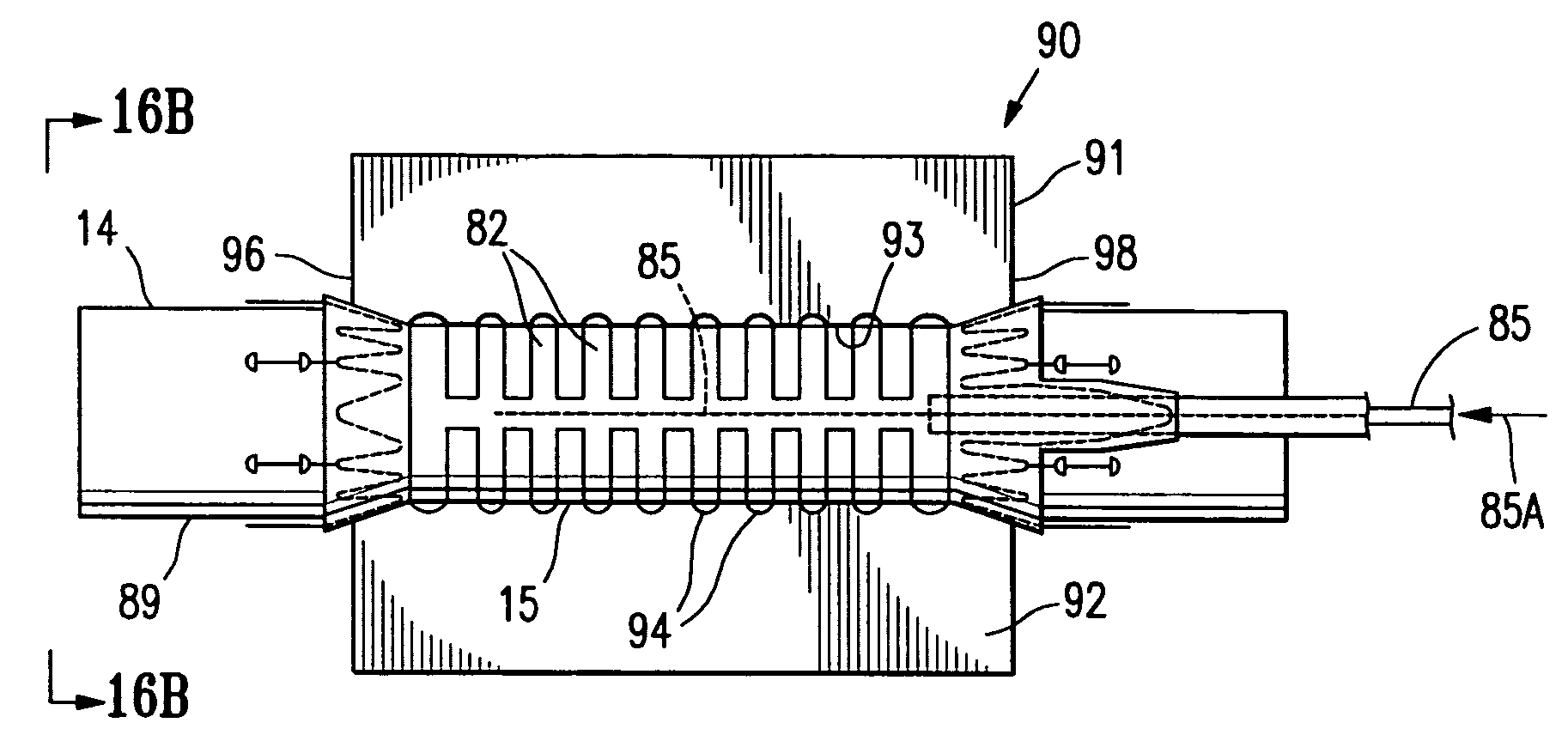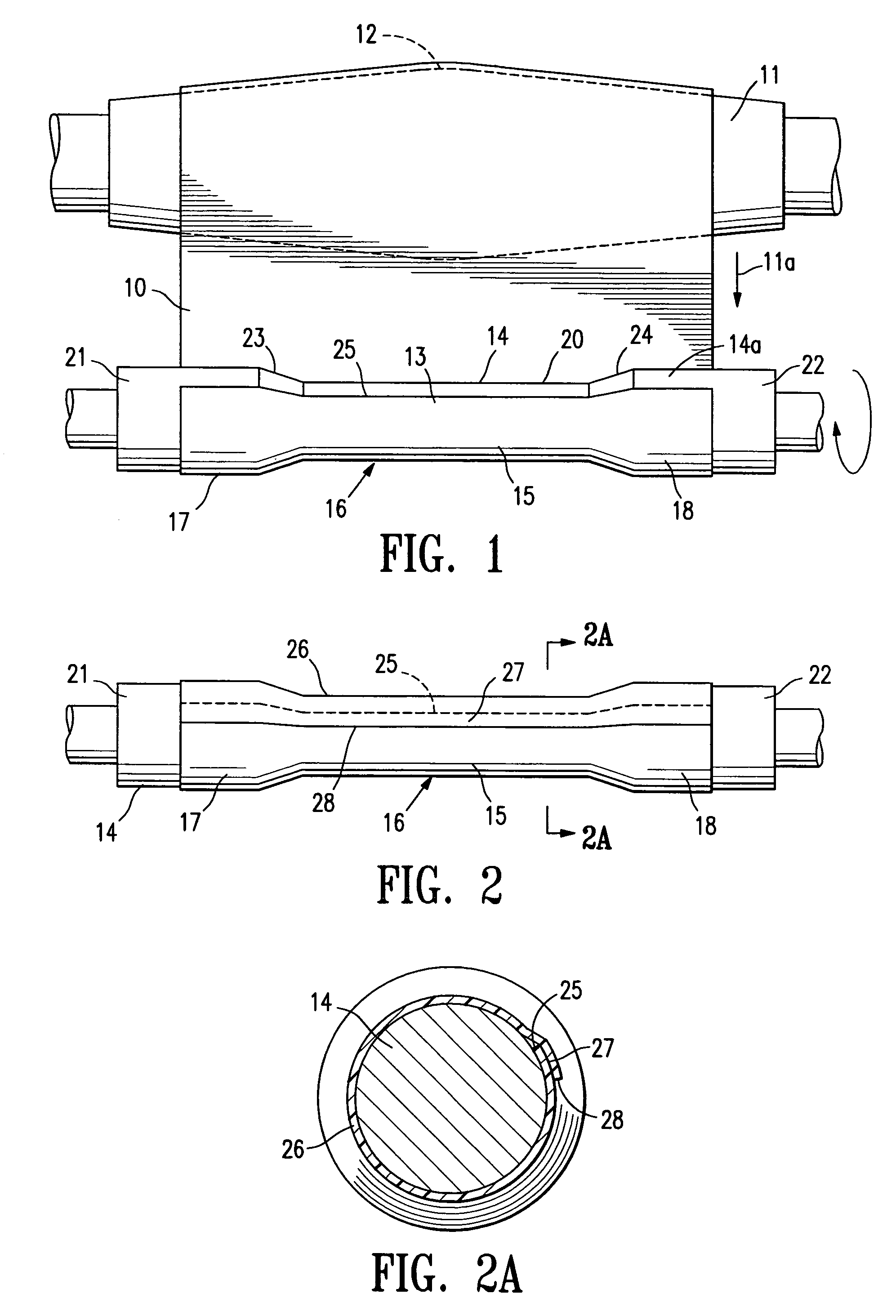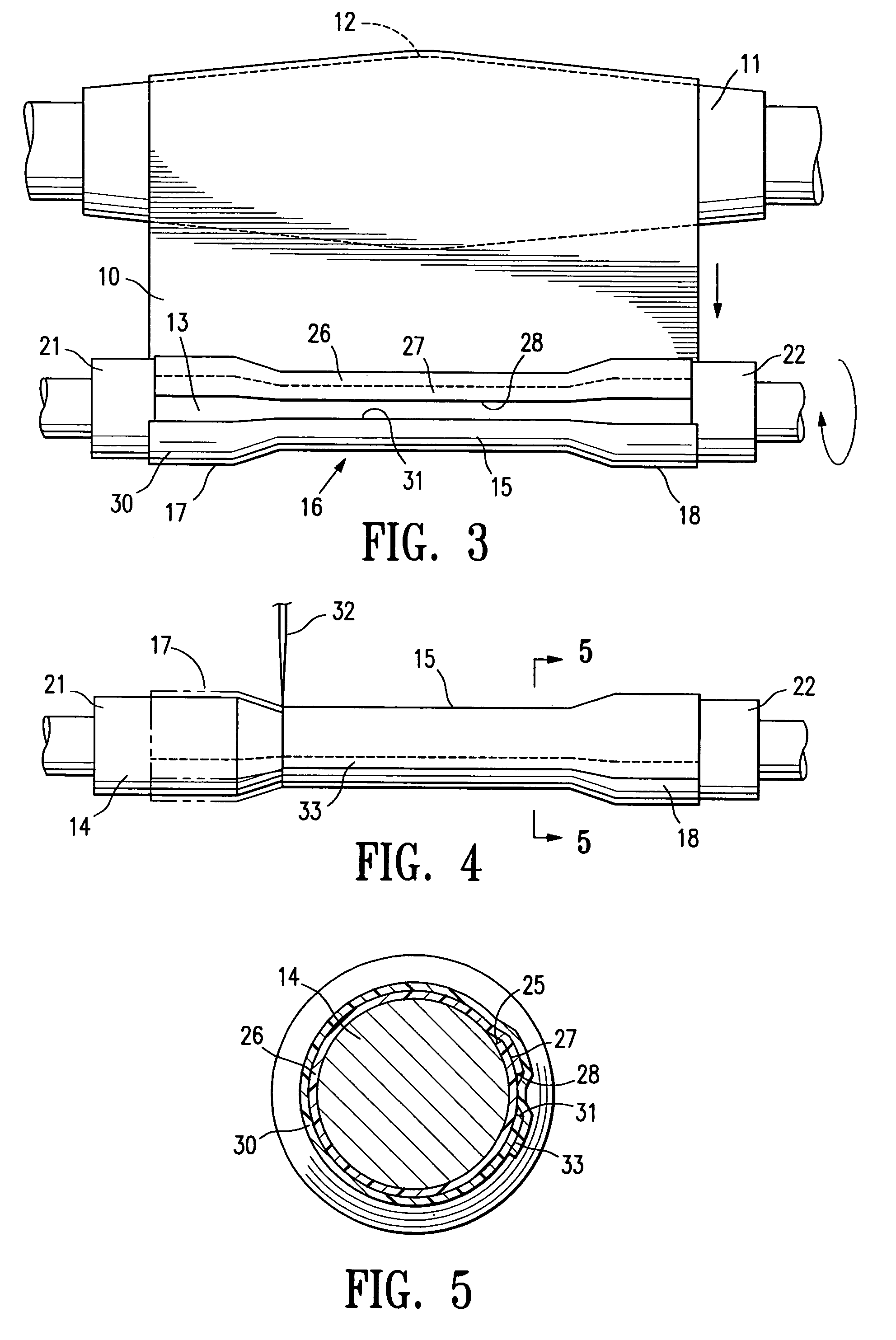Method for manufacturing an endovascular graft section
a technology of endovascular grafts and manufacturing methods, which is applied in the direction of prosthesis, blood vessels, other domestic articles, etc., can solve the problems of perioperative and postoperative morbidity and mortality, difficult and expensive manufacturing of endovascular grafts, and significant risks associated with surgical repair (including myocardial infarction and other complications related to coronary artery disease). to achieve the effect of facilitating adhesion
- Summary
- Abstract
- Description
- Claims
- Application Information
AI Technical Summary
Benefits of technology
Problems solved by technology
Method used
Image
Examples
Embodiment Construction
[0050]FIG. 1 illustrates a sheet of fusible material 10 stored on an elongate drum 11. The drum 11 is rotatable, substantially circular in transverse cross section and has a transverse dimension in the longitudinal center 12 that is greater than the transverse dimension of either end of the drum. The sheet of fusible material 10 is being rolled from the elongate drum in a single layer 13 onto an interior surface support means in the form of a cylindrical or tapered (conical) shape forming member or mandrel 14 to form a body section 15 of an endovascular graft 16. The body section 15 has a proximal end 17 and a distal end 18. For the purposes of this application, with reference to endovascular graft devices, the proximal end 17 describes the end of the graft that will be oriented towards the oncoming flow of bodily fluid, usually blood, when the device is deployed within a conduit of a patient's body. The distal end 18 of the graft is the end opposite the proximal end.
[0051]A single ...
PUM
| Property | Measurement | Unit |
|---|---|---|
| temperature | aaaaa | aaaaa |
| pressure | aaaaa | aaaaa |
| thickness | aaaaa | aaaaa |
Abstract
Description
Claims
Application Information
 Login to View More
Login to View More - R&D
- Intellectual Property
- Life Sciences
- Materials
- Tech Scout
- Unparalleled Data Quality
- Higher Quality Content
- 60% Fewer Hallucinations
Browse by: Latest US Patents, China's latest patents, Technical Efficacy Thesaurus, Application Domain, Technology Topic, Popular Technical Reports.
© 2025 PatSnap. All rights reserved.Legal|Privacy policy|Modern Slavery Act Transparency Statement|Sitemap|About US| Contact US: help@patsnap.com



